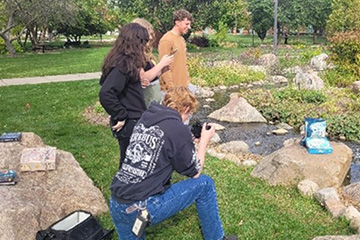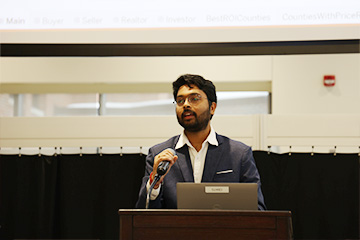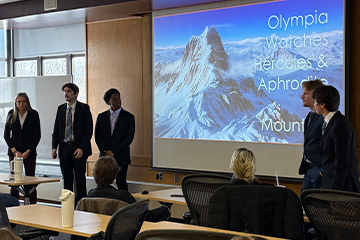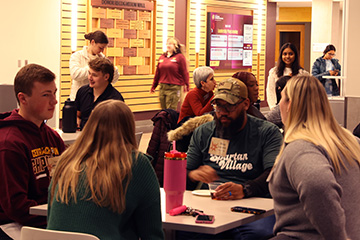Following curiosity into research
Faculty member Crina Tarasi shares how questions become discoveries
When people see a published research article, they often only glimpse the finished product—neat, polished, and concise. But behind every paper lies years of curiosity, collaboration, setbacks, and persistence.
For Crina Tarasi, faculty member in the Department of Marketing, Hospitality, and Logistics at Central Michigan University’s College of Business Administration, research is less about chasing a publication and more about exploring questions that matter.
“I often begin by observing something in the world around me and thinking, ‘This doesn’t seem right, why is it happening, and what impact does it have?’” Tarasi said.
Curiosity as a starting point
Tarasi explained that her research often begins with something she notices in the world around her, a puzzle, a contradiction, or a social problem that others aren’t yet studying. “I observed this widespread phenomenon, and I wondered, why is this happening? Am I right to see this impact? What are the true consequences?” she said.
From food deserts to the role of pricing in consumer behavior, Tarasi draws inspiration directly from real-world challenges. “As marketers, to me, competing on price is lazy marketing,” she said. “What does that ‘race to the bottom’ do to our society, both for customers and businesses?”
Collaboration and strong partnerships
For Tarasi, research is at its best when it is collaborative. Many projects begin at conferences or in conversations with colleagues who share a common interest.
“Communication, the ability to meet deadlines, and keeping your word are essential,” she said. “It’s not just about shared interest, but also about shared eagerness to move things forward.”
The research process: from idea to insight
Every project looks a little different, but many follow familiar steps:
- Idea generation: Questions emerge from observation or discussion.
- Data collection: Companies may provide sales and customer data, or researchers may interview community members.
- Analysis: Software tools help identify themes and connections.
- Sharing findings: Presentations at conferences allow for feedback and refinement.
“The more you stay with an idea, the more your understanding evolves,” Tarasi said. “That’s part of the fun.”
Some projects are completed quickly, while others take longer. In every case, Tarasi emphasizes the value of staying committed to a meaningful question.
Publishing and peer review
When it comes to publishing, Tarasi aims to share her work where it can have the greatest impact.
“The more relevant the journal is, the more people are going to read it and the more likely it is that research will be used,” she said.
She sees the peer-review process as an opportunity for growth. “Other smart people bring new perspectives,” she said. “It’s not always easy, but it pushes your work to the next level.”
A changing landscape with AI
Tarasi also reflects on the role of new tools, including AI, in research. “AI can provide a solid starting point, summarize theories or organize ideas,” she said. “But you still need to go back, check the sources, and do the work.”
She sees AI as a helpful support for refining phrasing or organizing ideas, but not a replacement for rigorous scholarship.
Advice for new researchers
For Tarasi, the real reward of research isn’t just the final publication, it’s the discovery that happens along the way. “Every project is a journey,” she said. “You learn, you adapt, and you uncover insights you never expected. That’s what makes research exciting.”
She encourages students and emerging scholars to approach the process with curiosity and patience. “Choose topics that truly inspire you, be reliable, and surround yourself with collaborators who share your drive,” she said. “Research takes time, but every step brings growth and the chance to contribute something meaningful to the world.”





